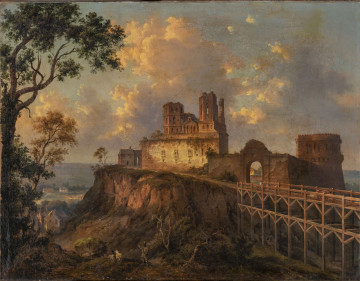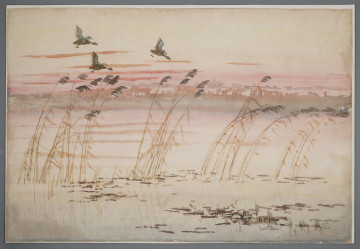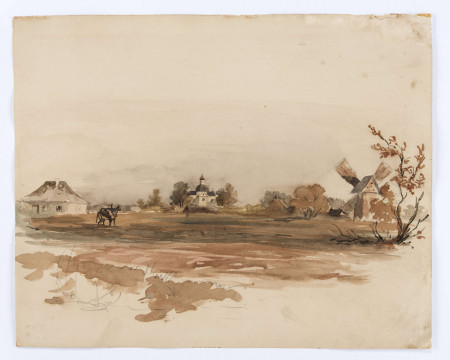
Ostroh Castle
1863
National Museum in Lublin
Part of the collection: Landscape
The first landscape in modern painting to depict a specific place is believed to be a painting by the German master Konrad Witz from 1444. Until the end of the 18th century, the landscape was treated as an insignificant subject, low-ranking in the hierarchy of painting genres. Admittedly, it constantly appeared in paintings, but as a complement or background to the main scene – religious, mythological or genre scenes. An exception to this rule was the 17th-century Dutch landscape painting. The proper development of the genre occurred in the 19th century to reach its apogee in impressionism. In Poland, due to the certain political conditions, new artistic phenomena usually appeared a few decades later, and therefore an independent landscape did not appear until after 1820. Christian Breslauer played a significant role in consolidating its importance. He was educated by the masters of the German Romantic landscape school, for whom landscape was a carrier of complex metaphysical content. The idealised views of unspoilt nature became an image of impenetrable divine wisdom and power; they showed symbolically transcendent meanings, being at the same time an expression of the state of the artist's soul. The features of this painting are visible in Breslauer's work. His favourite motifs were mountain slopes and cliffs, the surroundings of lakes and rivers, old castles against a background of wild nature and a cloudy sky, seen from a distant perspective. The artist travelled around Scandinavia for many years. His fascination with the northern landscape is evident in the painting records of his expeditions. Breslauer's paintings are beautified studies of the places he saw. A human appears sporadically in them. As in Krajobraz północny [Northern Landscape], he is usually a tiny figurine, a minor element of the powerful nature. The figure floating in a lonely boat on a great sheet of water may symbolise the human condition, its fragility and transience.
From Breslauer's studio came the precursors of Polish realism: W. Gerson, F. Kostrzewski, and J. Szermentowski. Thanks to innovative teaching methods based on studies in the open air, the generation of these artists focused on the native landscape, which became the carrier of new content. The next generation of Polish landscape painters led landscape painting to masterpieces by the Gierymski brothers, Chełmoński, Fałat, Ruszczyc, Stanisławski, Pankiewicz, Wyczółkowski and many others.
Bożena Kasperowicz
Author / creator
Dimensions
cały obiekt: height: 37 cm, width: 28,5 cm
Object type
painting
Technique
oil technique
Material
canvas, oil-based paint
Creation time / dating
Creation / finding place
Owner
The National Museum in Lublin
Identification number
Location / status

1863
National Museum in Lublin

1920
National Museum in Lublin

1853
National Museum in Lublin
DISCOVER this TOPIC
National Museum in Szczecin
DISCOVER this PATH
Educational path